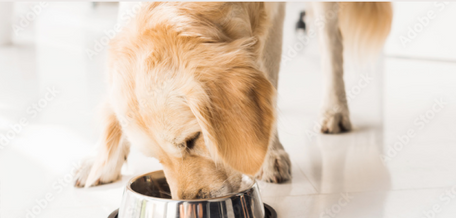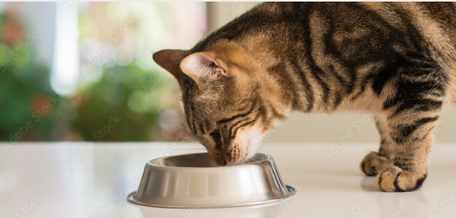
Switching to a raw food diet for dogs can greatly improve their health and well-being. However, making the change isn't always simple. Many pet owners make mistakes during the transition that can lead to digestive issues or an unbalanced diet. BJ’s Raw Pet Food is here to help with high-quality, balanced meals that make the switch easier for both you and your furry friend.
Key Takeaways
-
Transition your dog to a raw diet gradually to avoid stomach problems.
-
Ensure meals are balanced with the right mix of proteins, bones, and organs.
-
Control portion sizes based on your dog's size, age, and activity level.
-
Always consult a veterinarian for tailored advice during the transition.
-
Choose BJ’s Raw Pet Food for balanced, high-quality raw meals.
Introduction
Switching your dog to a raw food diet can be a rewarding journey. For dogs, eating raw food can lead to better health and energy levels. However, making this change requires careful planning and a smooth transition. It’s essential to understand the process to avoid common pitfalls. BJ’s Raw Pet Food is a trusted provider that offers high-quality, balanced raw meals to help you along the way.
When considering a raw food diet, keep in mind the following benefits:
-
Improved digestion
-
Increased energy levels
-
Healthier skin and coat
Transitioning to a raw diet doesn’t have to be overwhelming. With the right guidance and support, you can ensure your dog enjoys the benefits of a fresh raw food diet without unnecessary stress. Remember, taking it slow and being informed is key to a successful switch!
1. Switching Too Quickly
Transitioning your dog to a raw food diet can be exciting, but rushing the process can lead to digestive issues. It's essential to allow your dog's system to adjust gradually. Here are some key points to consider:
-
Start Slow: Begin by mixing a small amount of raw food with their current diet. Gradually increase the raw portion over time.
-
Monitor Reactions: Keep an eye on your dog's stool and overall health. If you notice any digestive upset, slow down the transition.
-
Be Patient: Each dog is different. Some may adapt quickly, while others need more time.
|
Week |
Raw Food Percentage |
Notes |
|---|---|---|
|
1 |
25% |
Mix with kibble |
|
2 |
50% |
Monitor health |
|
3 |
75% |
Adjust as needed |
|
4 |
100% |
Fully raw diet |
Remember, a gradual transition helps maintain your dog's gut health and prevents stress.
By taking your time, you can ensure a smoother switch to a raw diet, making it a positive experience for both you and your furry friend. Don't forget to consult with your veterinarian for personalized advice during this transition!
2. Unbalanced Diets

Understanding Balanced Meals
When switching to a raw food diet for dogs, providing balanced meals is essential. A well-rounded diet includes a mix of proteins, bones, and organs. Here’s a simple breakdown of what a balanced raw diet should look like:
|
Component |
Percentage of Diet |
|---|---|
|
Muscle Meat |
70% |
|
Organ Meats |
15% |
|
Vegetables/Fruits |
15% |
Key Nutritional Elements
To ensure your dog is getting the right nutrients, consider these important points:
-
Variety is Key: Include different types of meat and organ sources.
-
Calcium and Phosphorus Balance: These minerals must be in the right proportions to support bone health.
-
Omega Fatty Acids: Aim for a balance between omega-3 and omega-6 fatty acids to reduce inflammation.
A balanced diet helps prevent nutritional deficiencies that can lead to health issues over time.
Common Mistakes to Avoid
Many pet owners make mistakes when preparing raw meals. Here are some common pitfalls:
-
Relying on One Protein Source: Using only chicken or beef can lead to nutrient gaps.
-
Ignoring Organ Meats: Organs are rich in essential vitamins and minerals.
-
Overlooking Supplements: While whole foods are best, some dogs may need additional support based on their health needs.
By adopting a balanced strategy, dogs eating raw food will thrive. Keep in mind that dogs eating raw food need meticulous planning to adequately fulfill their nutritional requirements.
3. Ignoring Portion Control

Understanding Portion Control
When switching your dog to a raw food diet, portion control is essential. It’s not just about what you feed your dog, but also how much. Each dog is unique, and their dietary needs can vary based on age, size, and activity level. Here are some key points to consider:
-
Age: Puppies and older dogs have different nutritional needs compared to adult dogs.
-
Size: Larger breeds require more food than smaller breeds.
-
Activity Level: Active dogs may need more calories than those that are less active.
To help you determine the right portions, consider the following table:
|
Dog Size |
Daily Food Amount (Raw) |
|---|---|
|
Small (up to 20 lbs) |
1/2 to 1 cup |
|
Medium (21-50 lbs) |
1 to 2 cups |
|
Large (51-100 lbs) |
2 to 4 cups |
|
Extra Large (100+ lbs) |
4+ cups |
Remember, adjusting portions based on your dog's response is crucial. If your dog seems to be gaining or losing weight too quickly, it may be time to reassess their food intake.
By keeping an eye on portion sizes, you can help ensure your dog gets the right amount of nutrients without overfeeding. This will not only support their health but also help maintain a healthy weight, which is vital for their overall well-being. Always consult with your veterinarian for personalized advice on portion control and dietary needs.
4. Not Consulting a Veterinarian

Importance of Professional Guidance
When considering a raw food diet for your dog, consulting a veterinarian is essential. They can provide insights into your dog's specific health needs and help you avoid potential pitfalls.
Risks of Raw Diets
-
Nutritional Deficiencies: Dogs have unique dietary needs that differ from humans. A vet can help ensure your dog's diet is balanced and meets their specific requirements.
-
Health Concerns: Certain dogs, especially those that are young, old, or have health issues, may face risks with raw diets. A vet can guide you on the best approach for your pet.
-
Supplement Needs: Many dogs may require additional supplements to ensure they receive all necessary nutrients. Your vet can recommend the right ones based on your dog's individual needs.
Building a Collaborative Relationship
-
Education: It's important to educate yourself about raw diets, but also to listen to your vet's concerns. They may have valuable insights based on their training and experience.
-
Open Communication: Discuss your plans openly with your vet. This can help build a trusting relationship and ensure your dog's health is prioritized.
-
Veterinary Nutritionists: If possible, consult a veterinary nutritionist for specialized advice on creating a balanced raw diet.
Remember, a well-informed decision can lead to a healthier, happier dog. Don't skip the vet visit!
Conclusion
In summary, transitioning to a raw food diet for your dog can be a rewarding journey, but it’s essential to avoid common pitfalls. By taking your time and ensuring a balanced diet, you can set your dog up for success. Here are the key mistakes to steer clear of:
-
Switching too quickly: A gradual transition helps prevent digestive issues.
-
Unbalanced meals: Ensure your dog's diet includes the right mix of protein, bones, and organs.
-
Ignoring portion control: Adjust portions based on your dog's age, size, and activity level.
Remember, consulting a veterinarian can provide personalized guidance tailored to your dog's needs. With the right approach, you can enjoy the many benefits of raw feeding, including improved health and vitality for your furry friend.
"A well-planned raw diet can lead to a happier, healthier dog."
For those looking for high-quality, balanced raw meals, BJ’s Raw Pet Food is a trusted provider that can help ensure a smooth transition to this nutritious lifestyle.
Embrace the journey and enjoy the positive changes that come with a raw food diet!
In conclusion, giving your pets the best nutrition is essential for their health and happiness. If you want to explore high-quality raw food options for your furry friends, visit our website today! Your pets deserve the best, and we’re here to help you provide it!
Frequently Asked Questions
What is a raw food diet for dogs?
A raw food diet for dogs includes uncooked meat, bones, and organs, along with safe fruits and vegetables.
Why should I transition my dog to a raw food diet slowly?
Transitioning slowly helps prevent stomach issues and allows your dog to adjust to the new food.
What are the main components of a balanced raw diet?
A balanced raw diet should include protein, bones, and organ meats to meet your dog's nutritional needs.
How do I know the right portion size for my dog?
Portion sizes depend on your dog's age, size, and activity level. It's important to adjust accordingly.
Should I consult a vet before switching to a raw diet?
Yes, it's a good idea to talk to your vet for tailored advice, especially if your dog has health issues.
Where can I find high-quality raw pet food?
BJ’s Raw Pet Food is a trusted source for balanced and high-quality raw meals.





















